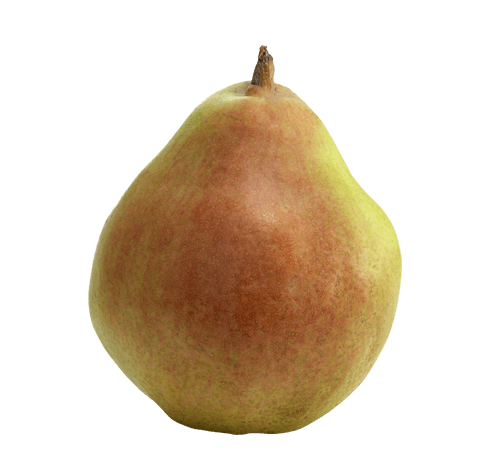Identifying Comice
Comice (pronounced ko-MEESE) appear in all sizes, but their shape is unique among varieties; having a rotund body with a very short, well-defined neck. They are most often green in color, and sometimes have a red blush covering small to large areas of the skin surface. However, some newer strains are almost entirely red in color. The succulent Comice can grow to be very large, and the jumbo-sized beauties are often the ones that appear in gift boxes.
Seasonality
Although pears of all types have a popular association with the winter holidays, Comice have earned special recognition as the "Christmas Pear." They are often the stars in holiday gift baskets and boxes, purchased in grocery store produce departments. Many stores feature Comice during the holiday season, but don't limit yourself of this special variety to just holidays!
You can find Comice pears in many grocery store produce departments for several months of the year. Comice can be purchased from September through February. Look for Northwest Comice pears in the fresh fruit section where you buy produce.
Ripening
Any area of green color on the skin of Comice may take on a slight yellow hue as the fruit ripens, however color is not the best determination for ripeness. Check the Neck for Ripeness™ by applying gentle thumb pressure near the stem end, and when the fruit gives slightly, it is ready to eat. Because Comice have very fragile skins, the pears may appear to be bruised on the surface, but more often than not this does not indicate damage on the juicy interior. Take special care in handling the fruit even before it is ripe. Bruising may not be apparent right away, but can show their signs as the fruit ripens.
Culinary Uses
The sweet buttery flesh of Comice can find no better compliment than when served with cheese, especially soft ripening cheeses like Brie, Camembert, or any of the blues. It is the extreme juiciness of Comice, which coincidentally makes them a poor choice for any process requiring cooking, that earns them such high accolades for eating freshly sliced. Ripen a Comice pear, section it and serve with your favorite cheese. Comice aficionados know this combination well... others have yet to realize what they've been missing! Let your tastebuds be your guide!
The History of Comice
Known properly as Doyenné Du Comice, this French variety of pear was first propagated near Angers in the mid-1800's. The first red sports were discovered in the 1900's near Medford, Oregon. A "sport" is a rare, naturally occurring transformation that develops spontaneously on fruit trees. The first red sport of Comice, discovered in 1960, presented a somewhat striped pattern. A full-red sport was discovered about 10 years later, also in the Medford area
